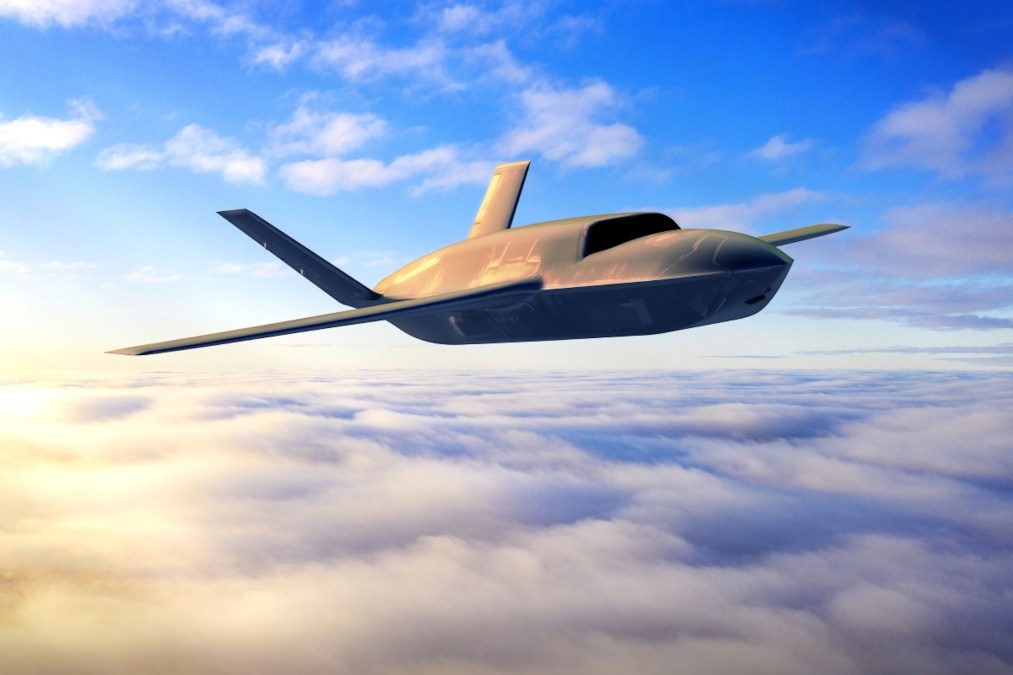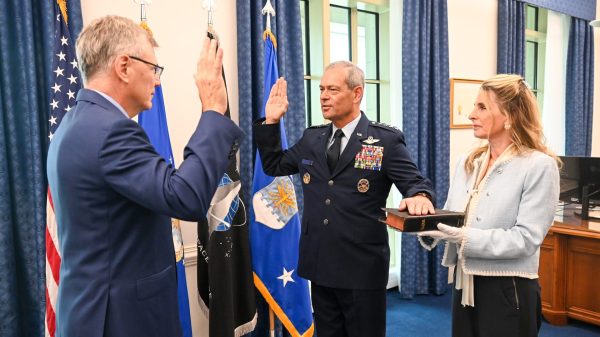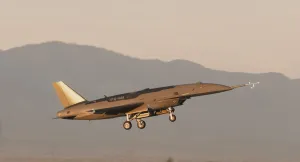Air Force wraps up critical design review for Increment 1 of CCA drones

Anduril and General Atomics have completed Critical Design Reviews (CDR) of their respective plans for Increment 1 of the Air Force’s collaborative combat aircraft (CCA) program, a service official announced Wednesday.
“We’ve just finished up, basically, critical design review for both Anduril and General Atomics. Both industry teammates are on the path to get to first flight in a timeline that allows us to get operational capability by the end of the decade,” Col. Timothy Helfrich, senior materiel leader for Air Force Materiel Command’s Advanced Aircraft Division, said during a panel at the Mitchell Institute’s Airpower Futures Forum.
General Atomics and Anduril each received contracts from the Air Force in April for the development-for-production phase of CCA Increment 1, beating out defense giants Lockheed Martin, Northrop Grumman and Boeing for the award. Under the effort’s current phase, the two firms are creating detailed designs, manufacturing drones and conducting flight tests for the CCA Increment 1 airframe.
As part of the Next-Generation Air Dominance (NGAD) family of systems, the CCA drones are intended to fly alongside the service’s manned platforms to augment its aircraft fleet for the service’s air dominance mission. The drones will carry equipment for a range of missions — including offensive strike and intelligence, surveillance and reconnaissance.
Now that Anduril and General Atomics have completed CDR — verifying their CCA airframe design maturity for potential development and production phases — both companies are gearing up to conduct first flight tests slated for 2025.
“I would say that we have matured the design to a critical point where we feel confident that it’s moving forward,” Diem Salmon, vice president for air dominance and strike at Anduril, told a small group of reporters after the panel. “Fabrication is moving very quickly, and it’s getting to the path where we’re going to be able to integrate and support the first flight that is, more or less, around the corner.”
As Anduril prepares to fly its offering for CCA Increment 1 — dubbed Fury — the defense startup is in the process of building the test article and testing sub-components before integration onto the airframe, Salmon said.
General Atomics is also on track to fly a variant of the Gambit family of drones it is proposing for CCA Increment 1 by mid-2025, and it’s taking cues from its successful flight demonstration of the XQ-67A Off-Board Sensing Station in February, a company spokesperson told DefenseScoop in a statement.
Mike Shortsleeve, vice president of strategy business development for General Atomics, said during the panel that the company is leveraging its decades of experience in designing and building unmanned aircraft as it prepares for the first flight.
“When we did the XQ-67A, that effort to build that x-plane — with about 70 to 80 percent carried over into what would be CCA — that helped us to understand not only how that design needs to work, but also how do you actually build it right,” Shortsleeve said.
The Air Force expects to make a competitive production decision for the CCA Increment 1 in fiscal 2026 and plans to field the first batch of systems before the end of the decade.
Helfrich added that the service is on the cusp of kicking off development for the next group of CCA drones known as Increment 2. The Air Force is currently conducting analysis “to make sure we understand what are the right mission use cases for Increment 2 and the top-level attributes. This fiscal year, we will kick off concept refinement, where we then bring in industry to help us further refine what those attributes are and whittle down those use-cases,” he said.
Each iteration of CCAs is expected to feature different capabilities based on the latest technology industry can offer the Air Force at the time. Once fielded, the service will determine which mix of increments will fly for certain missions based on the capabilities they’re carrying to meet specific force designs, Helfrich said.
“No one should think that Increment 2 means ‘Increment 1 plus.’ … That doesn’t mean that Increment 2 has more capability,” he said. “We’re still looking to figure out whether the right balance — if you’re doing the analysis — is to further bring down the capability to maximize a low cost, or is it that I need to change what the focus is from a missile truck to something else.”
In the meantime, the Air Force is also establishing an experimental operations unit that will focus on doctrine, organization, training, materiel, leadership, personnel, facilities, and policy concepts related to the CCA drones. During an event hosted by Defense One on Wednesday, Air Force acquisition head said he recently approved additional CCA purchases to equip the unit and enable experimentation with real drones.






